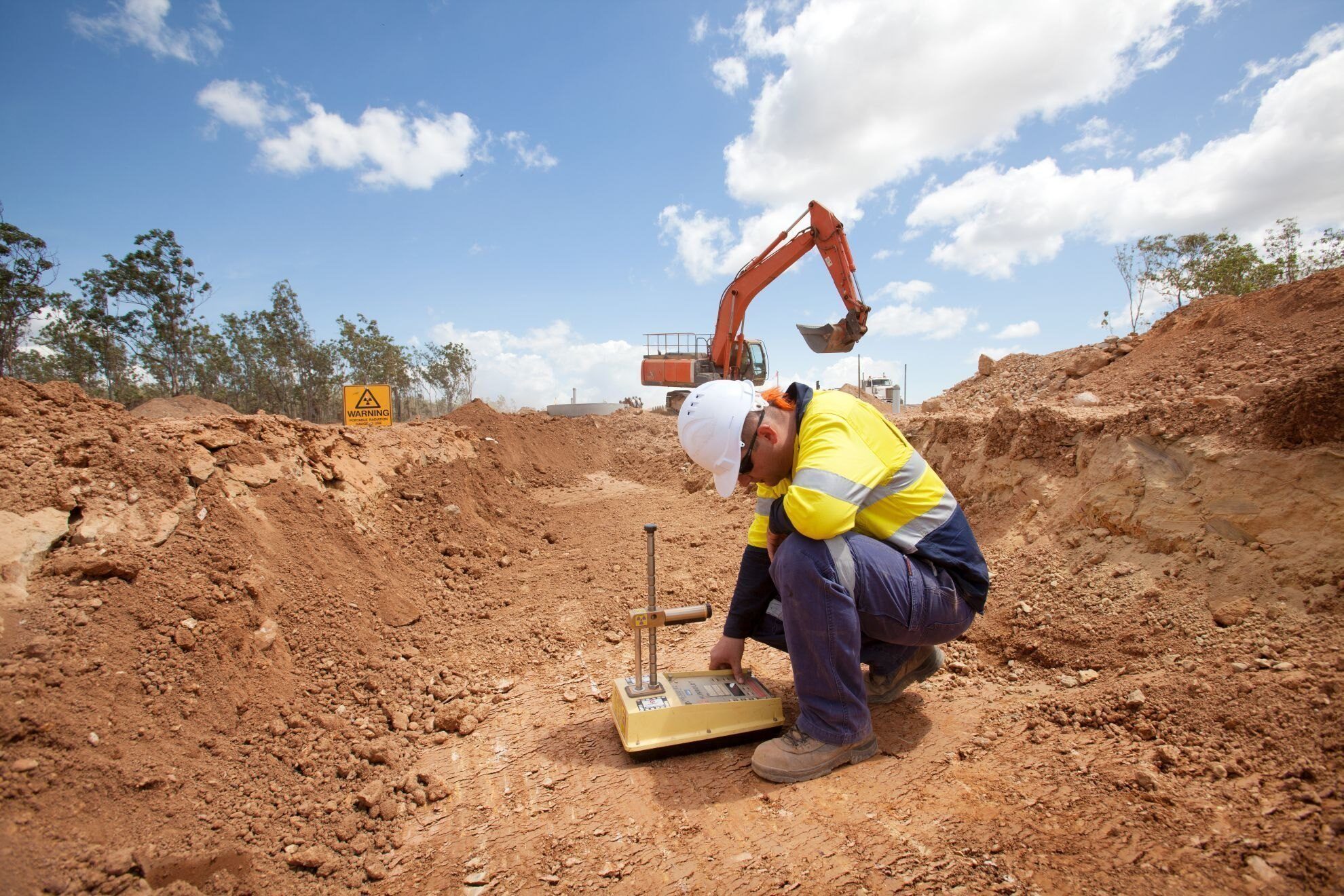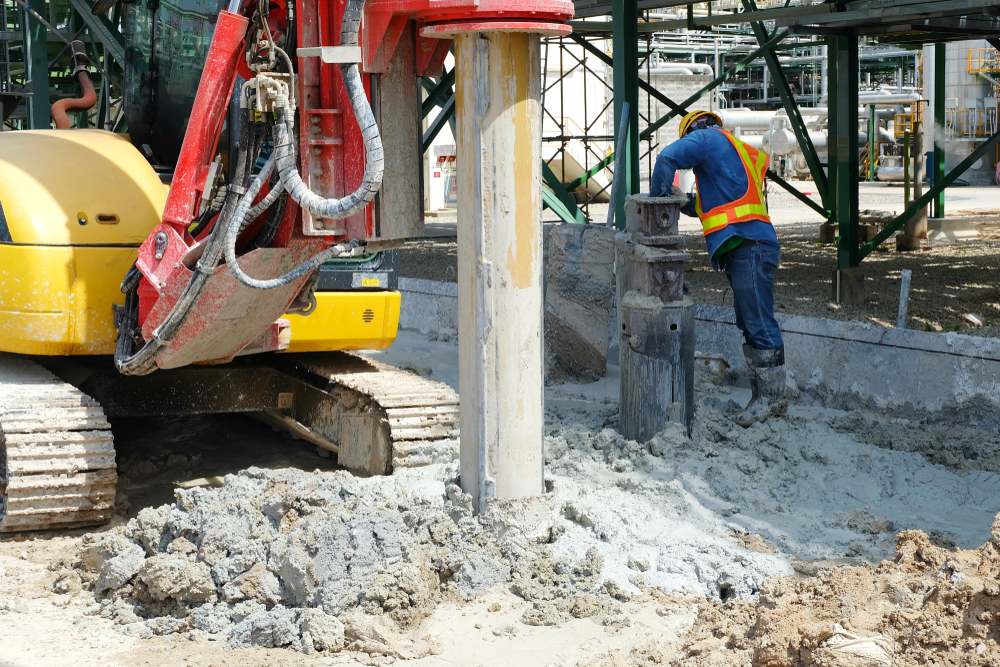Some Known Factual Statements About Geotechnical Engineering For Construction Projects
Table of ContentsThe Geotechnical Engineering For Construction Projects PDFsGeotechnical Engineering For Construction Projects - QuestionsGetting My Geotechnical Engineering For Construction Projects To WorkThe 7-Second Trick For Geotechnical Engineering For Construction ProjectsSome Known Facts About Geotechnical Engineering For Construction Projects.Get This Report about Geotechnical Engineering For Construction Projects
These functions should be examined by geotechnical designers to forecast their motions under different conditions., making this evaluation essential.A geotechnical engineer will certainly check out dirt to determine the bearing capability of the earth and recommend appropriate structure types, such as superficial structures, deep foundations like piles, or specialized services like floating structures for soft dirts. Understanding the features and activities of soil and rock, along with exactly how they interact with constructions that have been set up on or within them, is one of the primary descriptions for why geotechnical design is necessary.
Along with architectural preparation and building, geotechnical engineering is likewise essential to the reconstruction and maintenance of pre-existing structures. Age-related destruction or added troubles can affect a structure's security and performance. Environmental management is accomplished with geotechnical design. Experience in air, water, and dirt top quality maintenance is used by geotechnical engineers to reduce the unfavorable results of projects.
Framework development, offshore engineering, passage building and construction, and deep foundations. Risk-based layout and multidisciplinary teams. These parts will keep the field progressing and ensure its continued importance in the years ahead. To sum up, geotechnical design is a vital discipline that maintains the resilience and integrity of civil infrastructure. Geotechnical designers add to making building jobs efficient throughout the world by recognizing the behavior of planet materials and using appropriate planning strategies.
Getting My Geotechnical Engineering For Construction Projects To Work
By checking out dirt, rock, and subsurface conditions, geotechnical designers give vital understandings that assist in the style, building, and upkeep of structures and framework.

All about Geotechnical Engineering For Construction Projects
Lab testing: Determining the residential properties of dirt and rock. A number of top-level construction projects have efficiently utilized geotechnical engineering to ensure their security and safety and security.

As a leader in geotechnical engineering, BECC Inc. is committed to supplying ingenious and efficient solutions that meet the highest possible requirements of high quality and security. To find out more on just how BECC Inc. can support your following construction task, call us today and let us help you improve solid ground.
William Rankine, an engineer and physicist, created a different to Coulomb's planet pressure concept. Albert Atterberg established the clay consistency indices that are still utilized today for dirt category. In 1885, Osborne Reynolds acknowledged that shearing reasons volumetric extension of thick products and tightening of loose granular materials. Modern geotechnical design is claimed to have actually begun in 1925 with the magazine of Erdbaumechanik by Karl von Terzaghi, a mechanical engineer and geologist.
The 7-Minute Rule for Geotechnical Engineering For Construction Projects
Terzaghi likewise developed the framework for concepts of bearing capacity of structures, and the concept for prediction of the price of settlement of clay layers because of combination. Later on, Maurice Biot totally developed the three-dimensional soil combination theory, prolonging the one-dimensional design previously established by Terzaghi to more general theories and presenting the set of standard equations of Poroelasticity.
Geotechnical designers explore and figure out the buildings of subsurface conditions and products.
The Basic Principles Of Geotechnical Engineering For Construction Projects
Geologic mapping and interpretation of geomorphology are you could try these out typically finished in consultation with a rock hound or engineering geologist. Subsurface expedition typically includes in-situ screening (for instance, the basic penetration examination and cone penetration test). The excavating of examination pits and trenching (especially for finding mistakes and slide airplanes) might likewise be made use of to find out about soil conditions at depth. , which uses a thick-walled split spoon sampler, is the most common means to collect disrupted samples.

If the interface in between the mass and the base of a slope has a complex geometry, incline stability analysis is difficult and numerical solution methods are required. Commonly, the interface's exact geometry is unidentified, and a simplified interface geometry is presumed. Limited inclines call for three-dimensional versions to be assessed, so most inclines are examined assuming that they are definitely broad and can be represented by two-dimensional designs.
Not known Facts About Geotechnical Engineering For Construction Projects
The observational technique might be explained as complies with: General exploration sufficient to establish the rough nature, pattern, and buildings of look at here deposits. Assessment of one of the most probable conditions and one of the most undesirable imaginable discrepancies. Creating the layout based on a functioning theory of actions prepared for under look at this web-site one of the most likely problems. Selection of quantities to be observed as building profits and computing their prepared for values based upon the working hypothesis under the most negative conditions.
Dimension of amounts and assessment of actual conditions. Style modification per real problems The observational approach appropriates for building and construction that has actually already started when an unexpected advancement happens or when a failure or accident looms or has actually already occurred. It disagrees for projects whose design can not be modified during building.